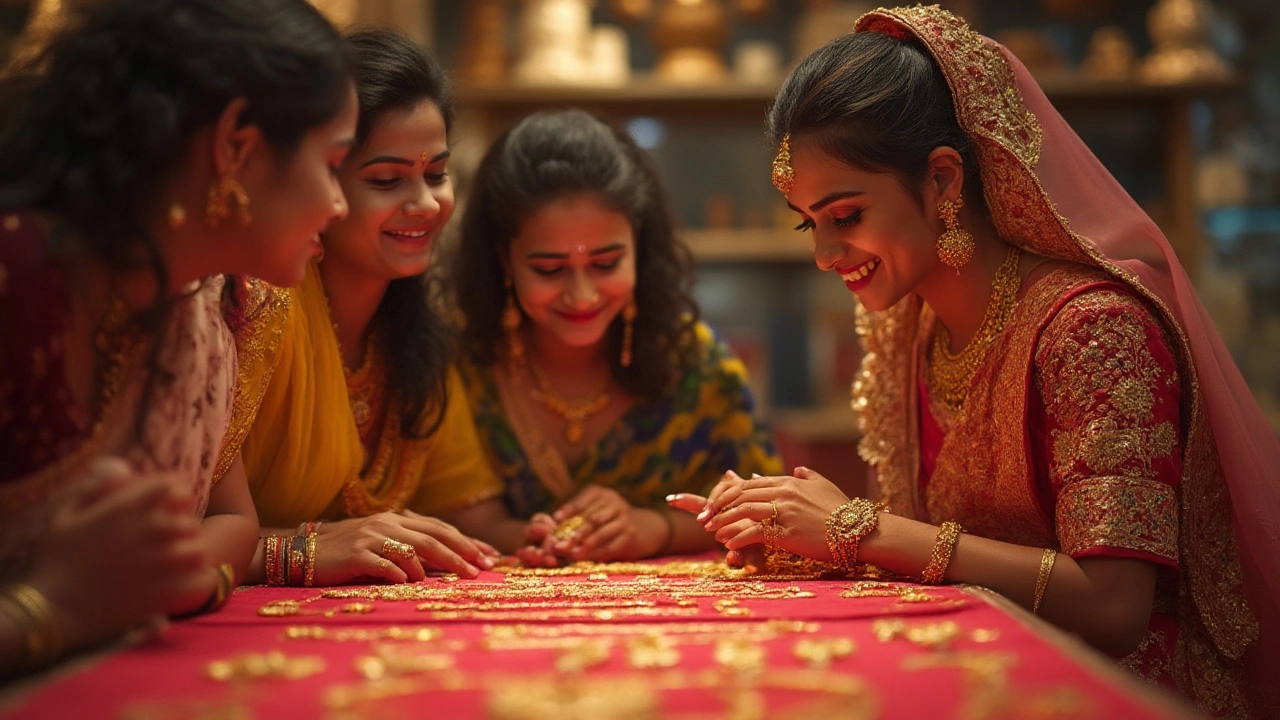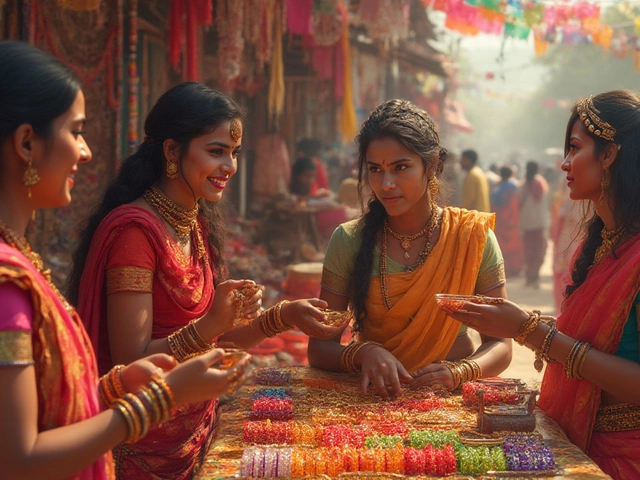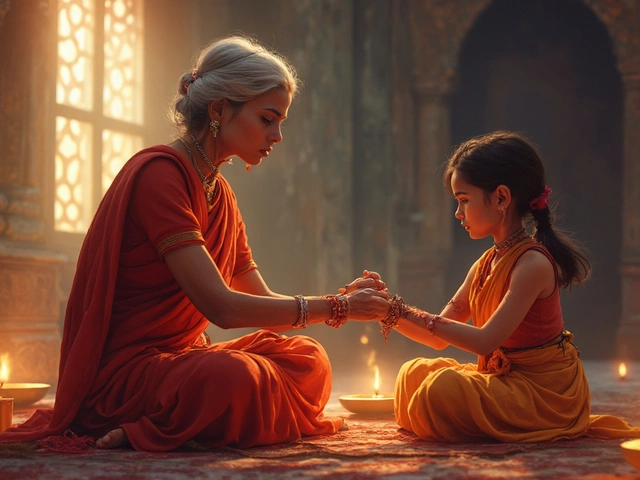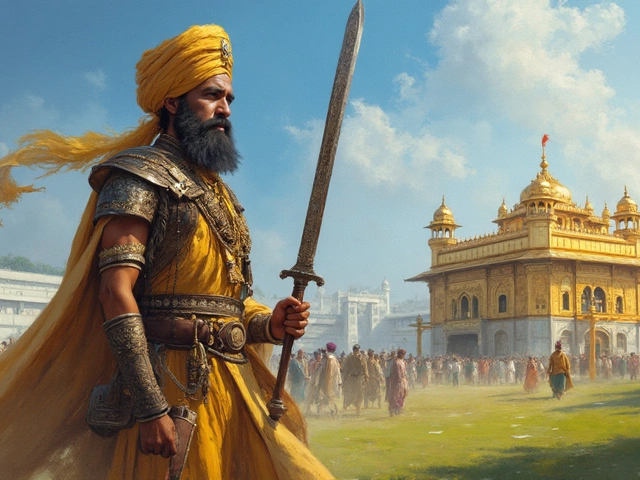The mangalsutra isn’t just a chain. It’s the Indian symbol of marriage that’s worn across states and cultures, standing for commitment and protection. It’s everywhere in wedding rituals, from Bollywood movies to South Indian TV dramas—always sparkling around the bride’s neck. But picking the right one? That’s where things get tricky. Between the classic black bead chains and the new-age diamond pendants, you’ve suddenly got a treasure hunt on your hands. And with your in-laws, your friends, and maybe even your Instagram followers all weighing in on style, it’s no wonder so many brides are confused about how to zero in on their perfect mangalsutra.
Sure, some go by what their family priest says. Others want something that matches their sari on the big day. But let’s be honest: most women want a mangalsutra that fits their everyday life and style—not just one wedding photo. So, if your wedding’s coming up, or you’re looking to upgrade or replace your mangalsutra, I’m breaking down every detail that really matters—from design and gold purity to the emotional value and latest trends. Here’s what you need to know so you can wear yours proudly, no matter where life takes you.
The Emotional and Cultural Meaning Behind a Mangalsutra
Let’s start by clearing the air: a mangalsutra is more than a piece of jewelry. It’s often given during the wedding ceremony in front of friends, family, and a bunch of relatives you probably barely know. The act of tying the mangalsutra is major. In many families, it’s up there with exchanging vows. The word itself means ‘auspicious thread’: in Sanskrit, ‘mangal’ is good fortune and ‘sutra’ is thread. The design of the thread may change from state to state (think Maharashtra vs. Tamil Nadu vs. Bengal), but the meaning? It’s universal—commitment, prosperity, and a wish for the bride’s long and healthy life.
Here’s the wild part. According to a report from the Indian Council of Historical Research, mangalsutra customs date back hundreds of years—predating even Mughal times. And every community has their twist. In Kerala, brides use a simple yellow thread called a ‘thaali’. In the North, you’re likely to see black beads strung with gold. Add diamonds, initials, and even Mother Mary lockets in some Goan Christian rituals. There’s always the notion of ‘protection’ linked to those black beads. Traditional belief says they keep away evil. That might sound superstitious, but more than 60% of Indian married women still say they wouldn’t skip wearing theirs daily, even when they go for a jog or to the office—the sentiment runs deep.
Don’t let anyone guilt-trip you with old taboos, though. Some women flaunt their mangalsutra as a public symbol of marriage, while others tuck it under a blouse for privacy or work rules. On social media, you’ll see posts from women who decided to get a second mangalsutra after their first one broke, calling the replacement moment a sign of a new start or renewed vows. The emotional connection is real—and for many couples, choosing the mangalsutra is as intimate as picking a wedding ring. This is why it’s important not to rush your decision or completely offload it to family elders. If the symbolism matters to you, spend time feeling out which design, weight, and chain type honestly speaks to you. That way, every time you touch that pendant, it’ll spark a good memory, not just a reminder of peer pressure.
Spotting the Differences: Regional Styles and Their Meaning
If you thought a mangalsutra is just a gold chain with black beads, get ready for a surprise. Step into any jewelry shop in Mumbai, Chennai, or Kolkata and you’ll see dozens of variations lying side by side. Some designs are so different, you’d think they come from another country, not another state!
Let’s look at a few popular types:
- Maharashtrian Mangalsutra: This is usually two vatis (cup-shaped gold discs) strung on a dual-string chain with alternating black and gold beads. Unique, right?
- North Indian Mangalsutra: The focus is on a single chain, sometimes double, with a pendant—usually heavy and ornate, with diamonds or colored stones.
- South Indian Thali/Karimani: Here, there’s immense variety. Tamil Nadu brides wear a plain yellow thread, often replaced later with gold, and add special coin-style pendants called thali or thirumangalyam. Kannadigas opt for kasina sara (coin chains), while the Telugus have their signature bottu with little motifs.
- Bengali Mangalsutra: Actually, Bengali Hindu women wear a similar chain called the ‘loha’ (iron bangle) and ‘Shakha Pola’ (conch shell bangles), but Goan Christians and some North-Eastern communities have mangalsutra made with colored glass beads or even plain gold wire.
If you’re marrying someone from a different community or living outside India, feel free to blend styles or customize. Some couples design their own pendants, merging both sides’ traditions. It’s totally possible to have a Maharashtrian chain with a Tamil-style pendant, or vice versa. Your mangalsutra should feel authentic to your own life, not just family history.
Here’s an interesting fact: Back in the 1980s, the average length of a mangalsutra was about 24 inches. Today, most brides opt for 16–18 inches so the chain sits closer to the neck and works better with western outfits like shirts and tops. That’s how quickly things are evolving, especially in cities. So, don’t be afraid to go for something practical if you’re someone who likes to travel, work, or just keep things simple.

Modern vs. Traditional Mangalsutra Designs
If picking between traditional and modern designs feels like a battle between parents and personal taste, you’re not alone. Most jewelers will first show you classic styles—thicker black bead chains with big gold work, sometimes with diamonds or cluster pendants. These are durable and tend to last decades. Some families even pass them down like heirlooms, fixing or polishing them every few years.
Modern mangalsutras, though, are in a totally different league. Today, you’ll find lightweight, minimal chains styled for daily wear. Popular options now include:
- Solitaire diamond pendants: Elegant, non-fussy, and you can wear them with literally ANY outfit. Bollywood celebs like Deepika Padukone and Anushka Sharma have worn these on magazine covers.
- Short mangalsutra bracelets: Instead of a chain, some brides wear a mangalsutra as a bracelet or even a ring—a trend that started in Mumbai boutiques about five years ago and is catching on in Delhi and Bangalore as well.
- Custom initial pendants: Some new-age couples get their initials crafted in gold, mixing tradition with their personal story—perfect for those who want a subtle yet meaningful twist.
- Diamond-studded designer mangalsutras: International brands like Malabar Gold and regional labels now offer mangalsutras that look just like fine necklaces—except for the tiny black beads discretely worked into the design.
This variety is great for one reason: you’re not boxed in by age-old norms anymore. If you want something understated that still honors the tradition, these designs work perfectly at the workplace (no HR warnings about “distracting jewelry”), during workouts, or while traveling. Just make sure you check the durability of the clasp and beads—some lighter chains tend to break if snagged.
The price difference is wide as well. While traditional designs might be 15–30 grams of gold, modern designs can go as light as 6–10 grams, dropping costs by thousands. If you want lots of sparkle but are on a budget, ask for 14K gold instead of 22K; it’s stronger and holds diamonds better, plus it’s cheaper. Here’s a table summarizing key differences:
| Type | Average Weight (grams) | Popular Materials | Price Range (INR) | Best For |
|---|---|---|---|---|
| Traditional | 15-30 | 22K Gold, Black beads | ₹60,000 - ₹1,60,000 | Cultural functions, Family events |
| Modern | 6-14 | 14K/18K Gold, Diamonds | ₹30,000 - ₹80,000 | Daily wear, Office |
Don’t worry about being judged for your choices; times have changed. At least 30% of Indian urban couples in 2024 chose two mangalsutras—one traditional for family occasions and one modern for everyday life. It’s okay to have both if it fits your routine.
How to Choose the Right Gold, Design, and Size for You
Shopping for a mangalsutra seriously tests your decision-making skills. Gold, black bead pattern, pendant size, diamond or no diamond, length, chain style, purity... it’s easy to get a headache just thinking about the options. Here’s how to break it down:
- Gold Purity: 22K (91.6% purity) is traditional, but 18K or 14K is stronger and often used for intricate or diamond designs. Always check the BIS (Bureau of Indian Standards) hallmark to avoid getting cheated.
- Weight and Budget: Heavier mangalsutras last longer and have a resale value, but also cost more and can feel bulky for daily wear. Decide where your comfort zone is and try on different weights. If you plan to wear it daily, go lighter (under 10 grams); only for special occasions, you can splurge on a statement piece.
- Chain Style: Double chains offer extra strength and are harder to break. Flexible links (like ‘singapur’ or box chains) are less likely to kink or snag in your hair. Test the clasp—flimsy ones might leave you hunting for lost beads!
- Bead Pattern: The number and arrangement of black beads can be a spiritual or design choice. Some chains have solid gold tubes separating the beads, others just a sequence of beads. If you’re not superstitious, go by whatever looks and feels better.
- Pendant or No Pendant: Traditional Maharashtrian and North Indian chains have pendants—floral, peacock, or deity motifs. Modern styles might only have a simple diamond or gold disc. Pick one that fits most of your wardrobe, or get a detachable design so you can swap pendants depending on your outfit!
- Length: 16–18 inches is the urban favorite for daily wear. Longer chains (20–24 inches) look graceful with saris or ethnic outfits. Try them on in-store wearing a few different necklines to see what flatters you best.
- Customization: Many jewelers now let you engrave names, initials, or even wedding dates on the clasp or pendant—making the mangalsutra unique to you both.
If you’re shopping online, check reviews, ask for real photos, and confirm the return/exchange policy. For in-store purchases, insist on a bill that lists gold weight, purity, and bead count—there have been cases where shops passed off glass beads as real black agate. And always buy from a trusted shop, even if it means spending a little extra; it saves tons of worry later.
The most important tip? Don’t get bullied by pushy salespeople or relatives. You’re the one wearing it, possibly for decades. Take your time, ask questions (“Is this really 22K gold?” “Can you increase or decrease the length?” “Will you fix it if the beads snap?”), and try everything on. You’ll know when you find that one chain that feels like you—the right mix of tradition, comfort, and personal flair.
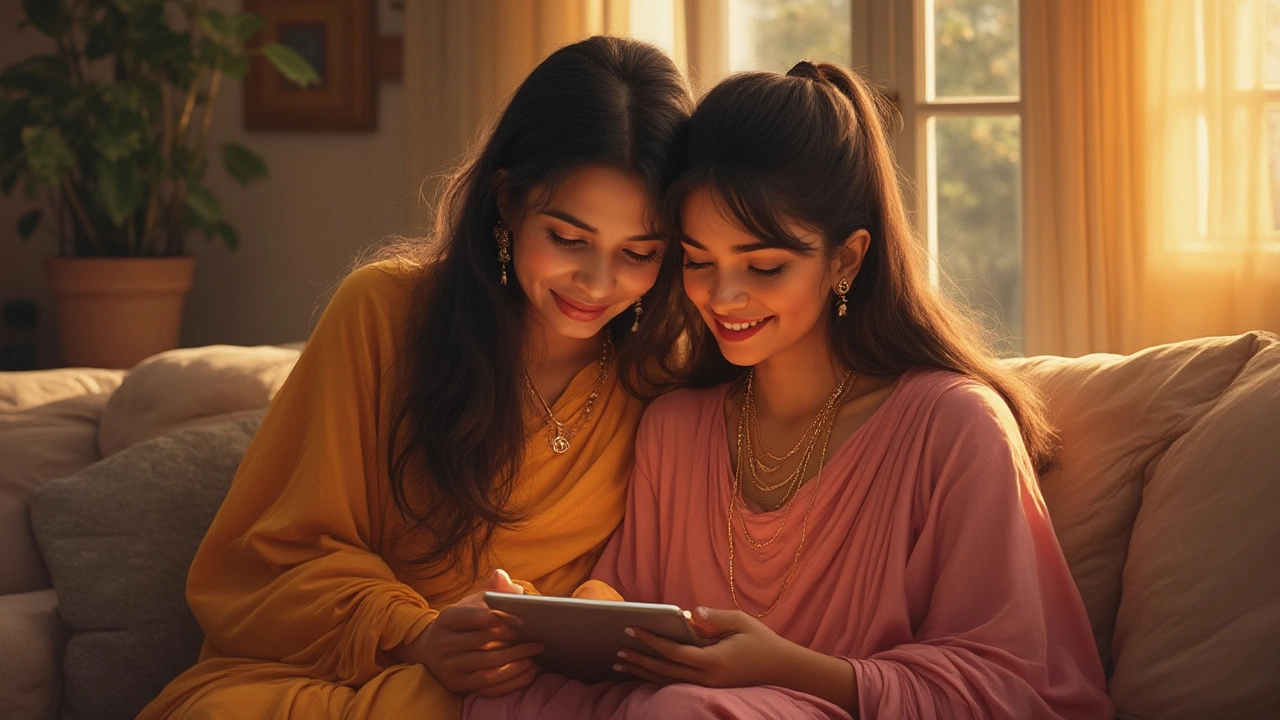
Tips for Keeping Your Mangalsutra Safe, Clean, and Meaningful
Got your dream mangalsutra? Don’t let it sit in a locker, waiting for weddings or festivals. The more you wear it, the more it becomes part of your story together. But daily wear means exposure to sweat, perfumes, and sometimes, accidental tugs from handbags or toddlers—so a little care goes a long way.
- Daily Care: Wipe with a soft cloth after showers or gym sessions. Take it off before applying perfumes, creams, or doing heavy chores. Store it flat in a lined box to avoid tangling.
- Monthly Clean: Soak in lukewarm water with a few drops of mild dish soap for 10–15 minutes. Use a soft toothbrush to clean black beads and settings, but don’t scrub hard. Rinse and dry with a kitchen towel. Avoid harsh jewelry cleaners—they might fade the black color.
- Yearly Service: Most jewelers will professionally clean and re-string chains, check clasps, and polish pendants for a small fee. This is key if you wear your mangalsutra every day—prevents breakage or bead loss. Don’t skip it!
- Travel: Carry your mangalsutra in a secure jewelry pouch, never loose in your handbag. For flights, always keep it in your hand luggage, not checked bags. Some women buy a cheap imitation chain for travel, wearing the real one only at destination weddings or big events.
One last thought: don’t let the mangalsutra become a routine or a burden. If it starts to lose its spark, switch up the pendant, change to a bracelet, or even design a new piece for an anniversary. It’s okay to refresh traditions with meaning and joy. And if you ever feel self-conscious about wearing your mangalsutra where you live or work, remember—you’re continuing a history that’s many centuries old. Own that with pride.
